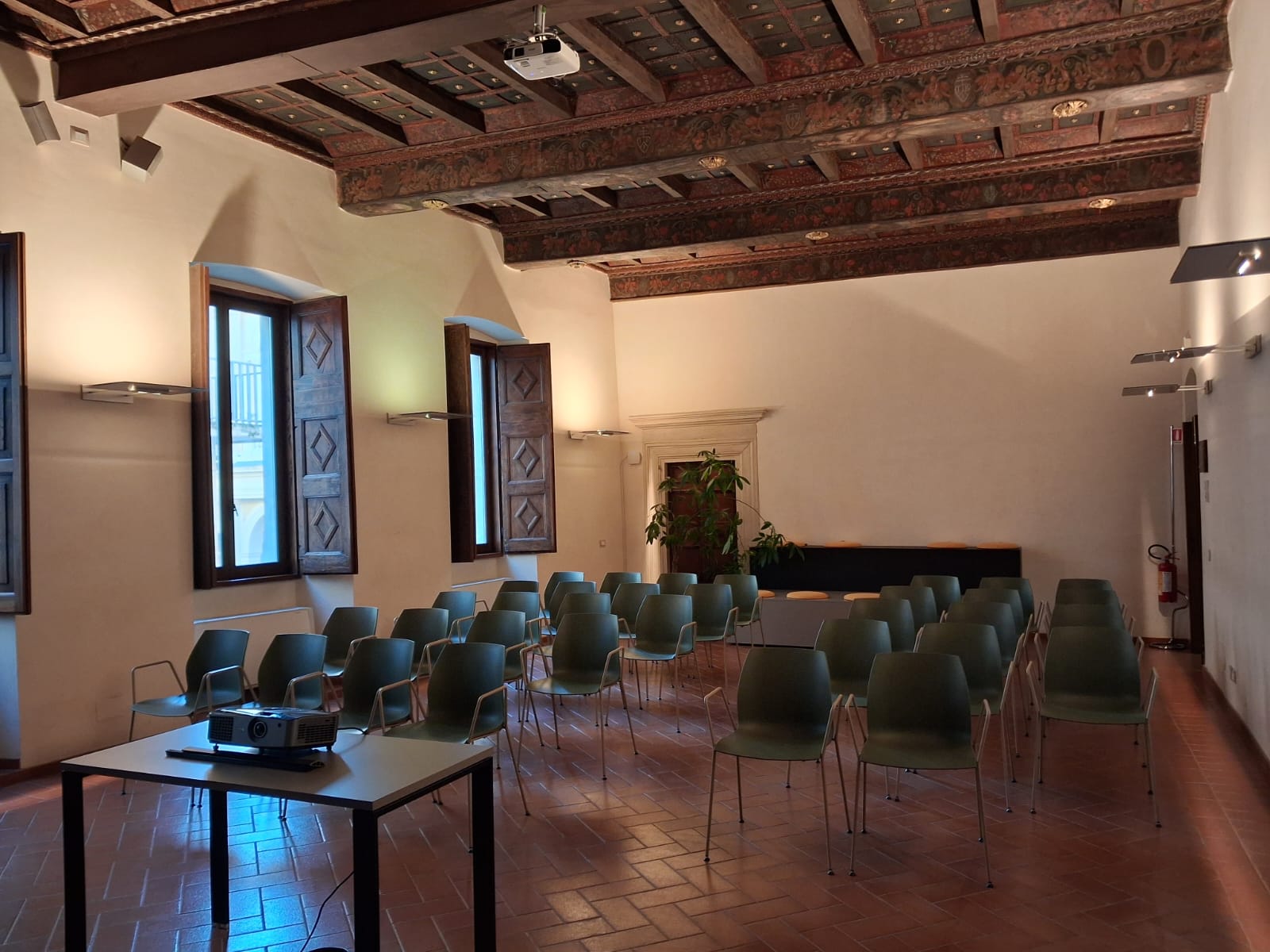"Cesare Rivera" room of Palazzo Fibbioni (Courtesy of the Municipality of L’Aquila)
Via S. Bernardino, 1, 67100 L'Aquila AQ
https://maps.app.goo.gl/MHp8arM2mjHspgar6

(from Wikipedia)
Palazzo Fibbioni, sometimes referred to as Palazzo Fibbioni Lopez, is a historic palace in L’Aquila.
History
It was the main residence of the family of the same name, whose progenitor, Bertolomeo del Secco, moved to L’Aquila in the 16th century from the province of Novara, earning the nickname “Fibbione” there. The family became extinct at the end of the 19th century, and the last heirs, Teodora and Agnese Fibbioni, decided in 1899 to establish a dedicated foundation for the management and preservation of the building.
The construction of the palace can be traced back to the late 16th century, and it is considered one of the earliest examples of Renaissance-style civil architecture in L’Aquila.
Already damaged by the earthquake of 1703, it was further harmed by the 2009 earthquake and subsequently restored starting in 2012. The restoration work was completed in August 2014. From 2015 to 2023, it temporarily housed the municipal offices while Palazzo Margherita was being restored; currently, it hosts some municipal offices.
Description
Located at the intersection known as dei Quattro Cantoni, the center of the cardo-decumanus system, the palace forms a single complex with the adjacent Palazzo Lopez, so it is not uncommon to refer to the structure by the combined name Palazzo Fibbioni Lopez.
It features two public façades, the main one facing Via San Bernardino and the secondary one on Corso Vittorio Emanuele; both façades are horizontally divided into three sections. The main façade, probably modified in later centuries, features a rusticated portal dating back to the 16th or 17th century. On the Via San Bernardino façade, the openings, all classical rectangular in style, are grouped at the center corresponding to the portal.
The interior contains some of the city’s most important wooden ceilings, with paintings by Giovan Paolo Cardone, a student of Pompeo Cesura.
